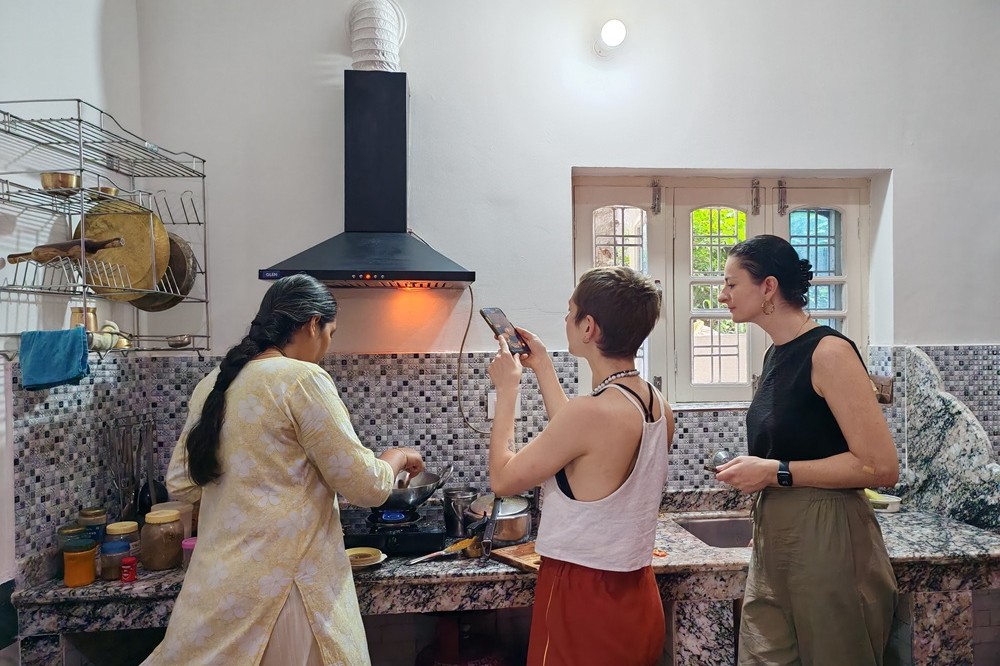Spice Up Your Trip: Best Indian Cooking Classes in Rishikesh
My name Anju Maurya , living in Rishikesh, and run “Om Homestay , Upper Tapovan Rishikesh” Before I start with the traditional healthy Indian food recipes, I decided to write some details about basics of Indian cooking style, my way –your way- the easy way!
There are some differences between the way “today Indian cooking classes style” and traditional way of cooking style. The taste never be same, but the way it is cooked today is not. I like to cook the traditional way, it does mean to spend the whole afternoon to make lunch.
I, on the other hand, love to cook traditional recipes what I learned form my grand mother and Vaishnava tradition! I try to have my life healthy and mindfulness by sharing insight on Indian cooking classes at my home in Rishikesh, and I never think about my life out of my kitchen, mortar and pestle.
What other says about her
Miss Anju Maurya is a very traditional Indian chef from Rishikesh. For 20 years, she has been volunteering business cooking food for Hindu temples , religious and spiritual events in her hometown in Varanasi.
She always cooked for free in social religious and spiritual gathering and events. She follows the Vaishnava tradition in all her recipes that means the cooking without onion, garlic etc.
Her cooking is known for its Sattvic Diet, delicate spices, and traditional Indian style. Through her food, she has built a very deep relationship with her culture and traditions. Now, she is ready to share her cooking secrets and explain their meaning in everyday life.

Traditional Indian Cooking Classes
Miss Anju explains:
And if you like to have healthy and mindfulness food on your plate then you must go for the old and traditional cooking style, I’ll encourage you to try out my Indian old traditional recipes in my way, my India cooking classes are followed by Vaishnava tradition, and you’ll see that they are loaded with positive energy, vibes and awesome flavors.
Some complaints I receive on Indian cooking classes from some guests that Indian cooking is very hard. It is the myth, Yes you heard maybe, is right, a myth! I know some of you are thinking like that, “Well, I think that’s simple for you… think like Indian and say yourself that you love Indian cooking.
Suggested Read: A detail Menu of North Indian Cooking Recipes
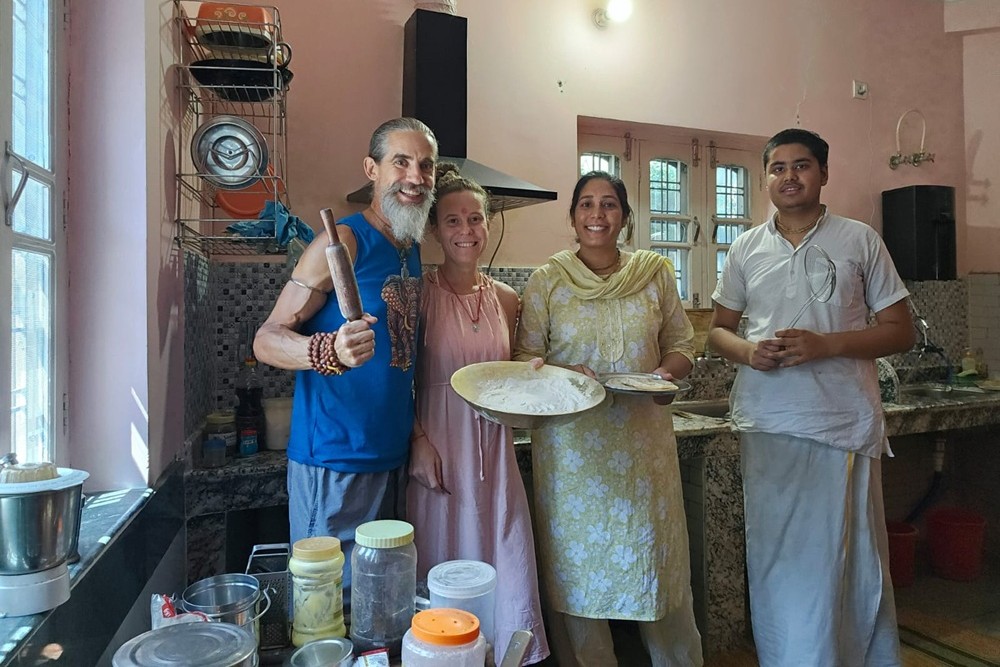
Of course I was born in an Indian typical family where cooking food, is still supposed to be a ritual and cooking with lots of care , following very strictly all the rules and conditions for purity purpose exactly dictated in Ayurveda text.
My grand mother who used to cook the most delicious Indian food which I still remember and I still have memory how to cook those foods. But truth I reveal before you that, I wasn’t born with Indian cooking instincts, whereas I learned it.
Surprisingly I tell you that I have convinced many people so far that how quick simple is cooking Indian recipes. I never shy to mention that the Indian cooking is the most healthiest food for spiritual person.
I can tell you that the way I cook the food, is the most healthy food for the heart and soul but I am not sure about the body’s health because each of us, have different body type as per Ayurveda tradition. That is reason I try to teach the food which enrich the hearth and soul.
Suggested Read: A detail Menu of South Indian Cooking Recipes
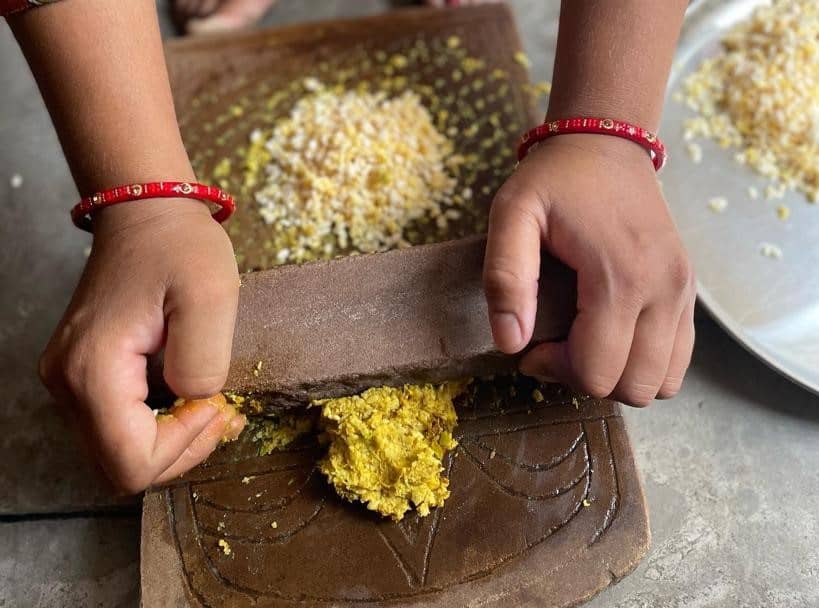
I think now online information about healthy foods are widely available on Internet for everyone, you can explore healthy food , body type yourself on internet , what is your body type and which is the best food to keep you healthy.
But still people wondering which food is healthy for heart and soul? So, here I would teach you the very traditional cooking recipes and the style of my cooking is focused on heart and soul wellbeing.
So here is where my heart got to work. I realized why not start Indian cooking classes in Rishikesh, and Indian food, If you will, it’s about introducing people to the basics of Indian cooking—a beginner’s classes for anyone eager to start their culinary journey from scratch.
Now I come back to the basics of Indian cooking, I’d love to give you an insight into what I keep in my kitchen that makes Indian cooking seem like simple and easy task. “Let’s begin with the essential spice collection.
These days, most of these spices can be easily found at local grocery stores in Rishikesh and across other towns.. “In fact, it’s quite rare that I need to visit a specialty Indian store — most ingredients are readily available in regular markets.”
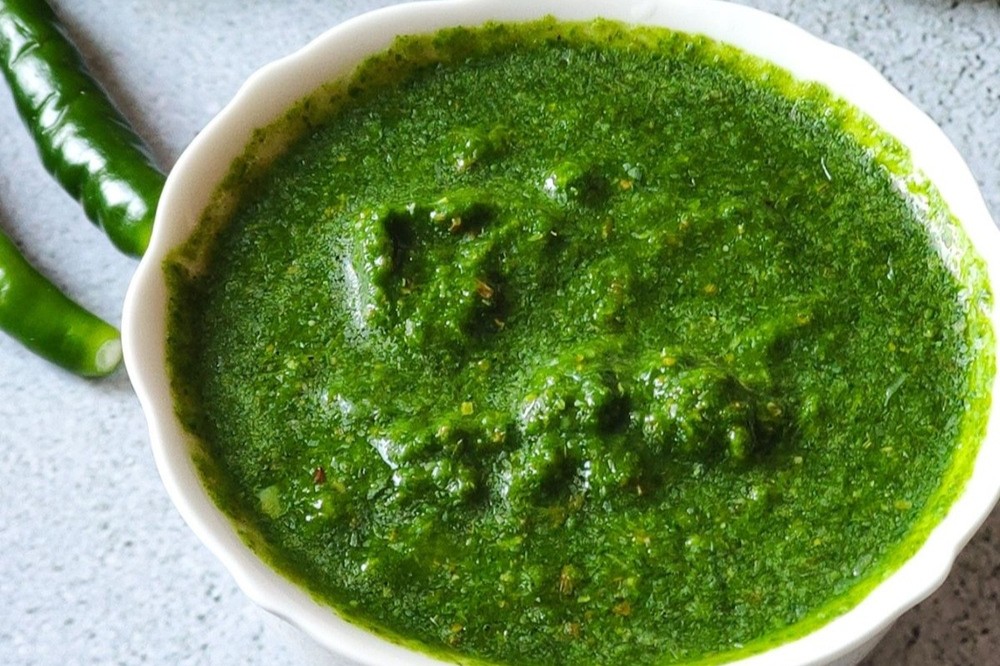
Essential Indian Spices
Building a basic spice collection is the first step toward mastering flavorful Indian cooking. Thankfully, most of these spices are now easily available in regular grocery stores and local markets in Rishikesh. Here’s a list of essential spices every home kitchen should have — along with their uses:
1. Haldi (Turmeric Powder)
- Use: Adds warm color and earthy flavor to curries, dals, and sabzis.
- Tip: Known for its anti-inflammatory properties, it’s also used in Ayurvedic remedies.
2. Jeera (Cumin Seeds)
- Use: Used for tempering in dals, curries, and rice dishes.
- Tip: Roast lightly to enhance its nutty aroma.
3. Dhaniya Powder (Coriander Powder)
- Use: A common base spice for most Indian vegetable dishes.
- Tip: Try freshly grinding coriander seeds for a richer flavor.
4. Garam Masala
- Use: A finishing spice blend that enhances flavor in curries and gravies.
- Tip: Sprinkle at the end of cooking to preserve its aroma.
5. Lal Mirch Powder (Red Chili Powder)
- Use: Adds heat and color to a wide variety of dishes.
- Tip: Adjust quantity depending on the spice level you prefer.
6. Sarson (Mustard Seeds)
- Use: Often used in tempering South Indian dishes, pickles, and stir-fries.
- Tip: Let them crackle in hot oil before adding other ingredients.
7. Hing (Asafoetida)
- Use: A powerful spice used in lentils and sattvic recipes, especially for digestion.
- Tip: Use a pinch – a little goes a long way!
8. Methi (Fenugreek Seeds)
- Use: Used in pickles and some lentil dishes; offers a slightly bitter flavor.
- Tip: Soak before use or dry roast to tone down bitterness.
9. Tej Patta (Bay Leaves)
- Use: Common in rice dishes, biryanis, and curries.
- Tip: Remove before serving — it’s used for flavor, not eating.
10. Elaichi (Cardamom – Green & Black)
- Use: Adds sweet-spicy notes to desserts, chai, and curries.
- Tip: Crush before adding for maximum aroma.
11. Dalchini (Cinnamon Stick)
- Use: Adds warmth to curries, pulaos, and sweet dishes.
- Tip: Often part of whole spice (khada masala) tempering.
12. Cloves (Laung)
- Use: Used in spice mixes, biryanis, and tea.
- Tip: Strong in flavor – just one or two are enough.
Where to Buy in Rishikesh
Most general stores in Rishikesh stock these spices, especially in areas near Lakshman Jhula, Tapovan, and Rishikesh main market. You’ll also find them in organic shops or ashram co-ops, often in pure or Ayurvedic forms.
I recommend you to buy spices from Rishikesh main market, there is a specific local shop who sells most of product organic on local price, but if you buy them from touristy area then price is will be very high and the quality will be very low. The recommended shop is M/s Dagar Laghu Udyog, Rishikesh- Phone Number 9719633608
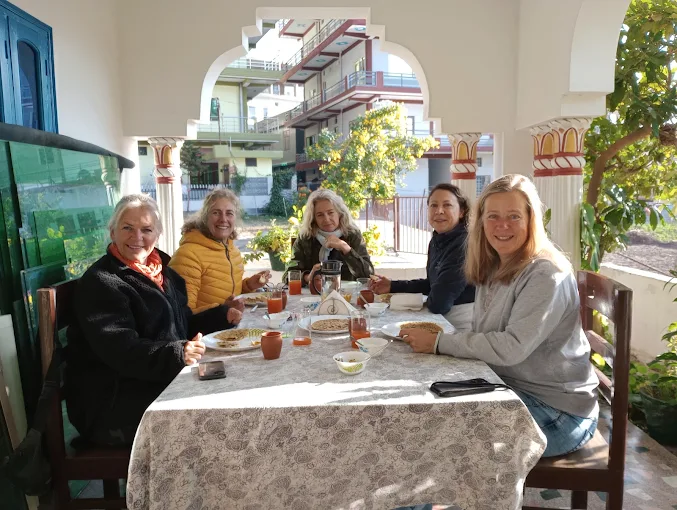
Essentials in Every Indian Kitchen
These staples are found in almost every Indian refrigerator, ready to add freshness, flavor, and depth to everyday meals:
-
Plain Yogurt (Dahi):
Used in everything from marinades to raitas, lassis, and cooling accompaniments for spicy dishes. -
Fresh Coriander Leaves (Dhaniya):
Adds a burst of freshness to nearly every Indian dish. Often sprinkled as a garnish right before serving.
Essential Cookware for Every Indian Stove
The right tools make all the difference when preparing Indian meals. Here are the must-have pans and pots you’ll use daily:
-
Non-Stick Frying Pan (Tava or Skillet):
Perfect for making dosas, parathas, omelettes, or shallow frying. -
Deep Saute Pan (Handi or Kadhai with Lid):
Ideal for curries, sabzis, and one-pot meals with rich gravies. -
Deep Soup Pot (Patila or Saucepot):
Used for boiling dals, rice, soups, or stews — great for slow-cooking. -
Non-Stick Wok (Kadhai):
A kitchen classic in Indian homes — great for deep-frying, sautéing vegetables, or cooking bhindi, aloo, and more.
Indian Cooking Classes Indian Cooking Classes Indian Cooking Classes Indian Cooking Classes Indian Cooking Classes Indian Cooking Classes Indian Cooking Classes Indian Cooking Classes Indian Cooking Classes Indian Cooking Classes

